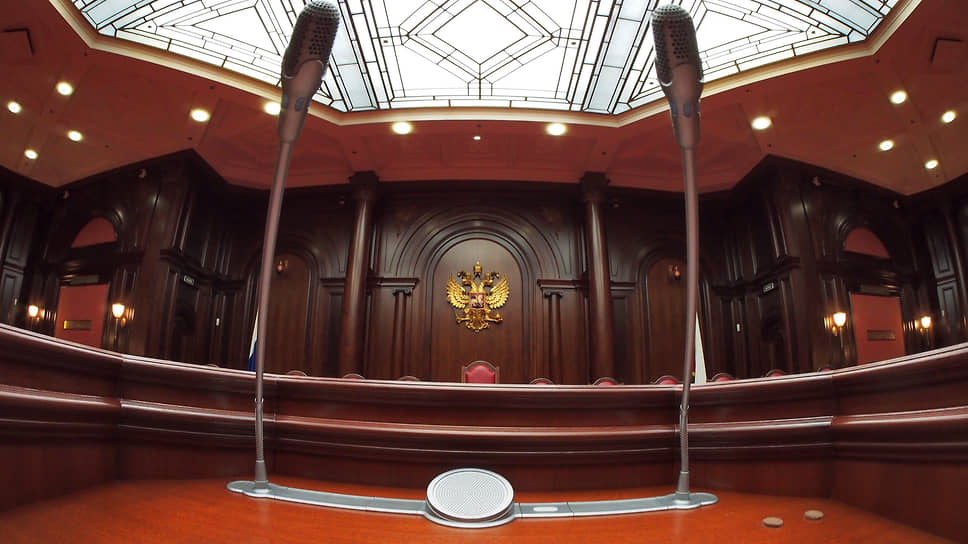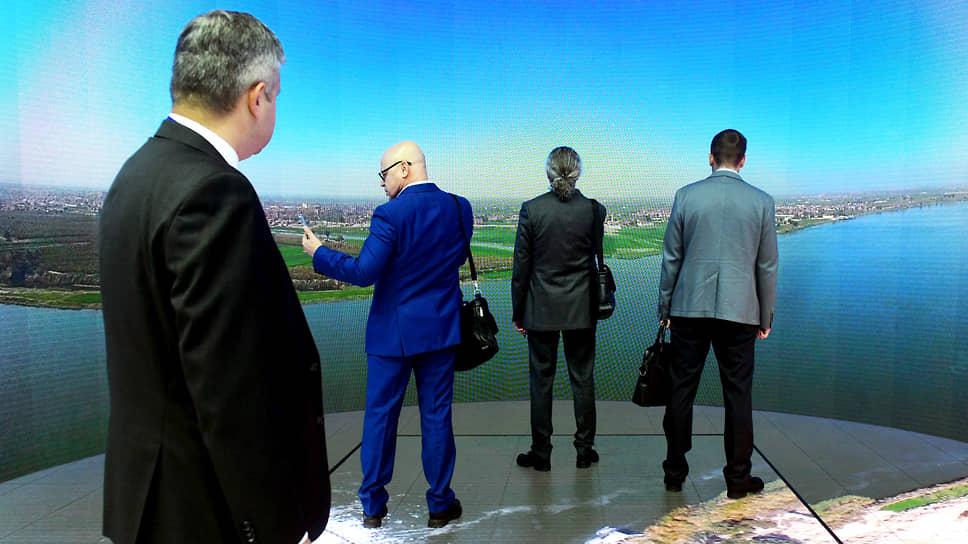How to distinguish cooperation for the benefit of import substitution from price fixing
[ad_1]
The Supreme Court of the Russian Federation (SC) for the first time at the level of the Economic Collegium considered a dispute about a cartel (anti-competitive agreement) between market participants, simplifying its proof for the antimonopoly authority. The presence of a collusion can be recognized on several formal grounds and indirect circumstances, and even an agreement on cooperation between competitors agreed by the FAS does not guarantee protection against claims. Lawyers say that the position of the Supreme Court, coupled with the recent decision of the Constitutional Court of the Russian Federation (CC), “toughens the approach to cartels.” Now it will be more difficult for businesses to prove the legitimacy of their actions at the auction, especially if the price of the contract decreases slightly during the auction.
Close relationships for the good of the cause
The Supreme Court considered the dispute about what is considered a cartel. In July 2020, the FAS Department (UFAS) for the Novosibirsk Region recognized Radiation Tekhnika LLC and Sibmer LLC as violating Art. 11 of the Law “On Protection of Competition” (prohibits agreements restricting competition in one product market). According to the department, the companies entered into and implemented an anti-competitive agreement in order to ensure “a victory for a certain business entity in open electronic auctions.”
OFAS referred, among other things, to the coincidence of the actual addresses of the companies, identical IP addresses for actions in the bank-client system, the presence of mutual bank transfers, and cross-combination of one-time work of employees. Another evidence of collusion, the management considered the conclusion by the firms of a technical cooperation agreement dated July 1, 2017 (it was agreed by the Federal Antimonopoly Service of the Russian Federation). According to it, Radiation Technology and Sibmer agreed, among other things, to jointly participate in tenders for the performance of works on the comprehensive maintenance of radiation therapy equipment and other medical equipment, on the supply and disposal of radionuclide sources for gamma devices.
The companies were issued an order to stop the violation, they first appealed against it to the FAS, and then went to court. The firms explained in court that the purpose of the agreement was the timely and high-quality execution of government contracts, as well as the development and creation of new import-substituting goods. As a result, arbitration courts of three instances sided with the companies, deciding that the cartel agreement was not proven.
The technical cooperation of the firms was recognized as “acceptable, aimed at the development of new products” and obtaining by their buyers “advantages in the form of budget savings in the event of replacing imported equipment.”
In particular, thanks to this cooperation, in April 2022 Roszdravnadzor registered the medical product “Gamma Therapeutic Complex Bhabhatron-P”.
In general, according to the courts, “close business relations between legal entities are not an obstacle to their joint participation in the auction,” and the department did not substantiate how such joint participation restricts competition. The use of “a single infrastructure, the presence of financial and personnel interconnection between companies” still “does not speak of a violation of the antimonopoly ban.” At the same time, the OFAS did not establish unusual behavior of companies at auctions, its focus on “implementation of a unified strategy” or the absence of “reasonable economic motives,” according to judicial acts.
Non-competitive behavior pattern
The Office challenged these decisions in the Supreme Court. It insisted that in the procurement procedures “a certain pattern of behavior can be traced”, in which both companies participated in each auction and, “formally acting as competitors, conceded the victory to each other at the highest possible price.” This, according to the OFAS, is “a form of implementation of an anti-competitive agreement”, which allows maintaining the price at the auction “in the absence of competition between participants”. The department does not consider such behavior of companies “economically justified”, since it does not explain the “passive behavior of bidders, expressed in the refusal to submit price proposals when submitting an application.” On these grounds, the case was referred to the Economic Collegium of the Armed Forces, which supported the antimonopoly body.
The Supreme Court considered that the courts did not properly assess the arguments of the OFAS about the same model of behavior of companies, including the “appearance of competition” and the minimum price reduction (most often by 0.5-1%) at the auction, where only these two firms participated . Meanwhile, if other subjects also participated in the auction, then the reduction in the initial price was significant (by 49–87%), moreover, due to proposals from participants in the alleged collusion. According to the Supreme Court, this may confirm that between the companies “there was not only an agreement on technical cooperation and mutual exchange of financial and labor resources, which in itself is not prohibited by law, but also another agreement aimed at modeling competition by maintaining prices.”
The legislation “does not prevent entities from taking into account the capabilities and behavior of their competitors and does not prohibit mutually beneficial cooperation between them,” but “one cannot collude” with the aim of “disrupting the bidding mechanism,” the Supreme Court pointed out.
To identify a cartel, it is necessary to establish “the presence of bidders in a state of competition, the use of a strategy of behavior aimed at extracting property benefits by ensuring victory for individual participants”, and the burden of proving this lies with the department.
At the same time, companies “should not be expected” to voluntarily disclose their arrangements. In most cases, the Supreme Court explained, the existence of a cartel “may stem from various non-random coincidences in the behavior of the subjects, despite the fact that their behavior has no logical (reasonable) justification” and be confirmed “with the help of circumstantial evidence.” Also, the courts should have considered the possibility of involving the FAS in addition to the regional administration. As a result, the dispute was sent for a new consideration.
Lowering the standard of proof
Orchards adviser Anastasia Sivitskaya considers it important that the Supreme Court indicate the need to involve the FAS in the case, which previously recognized the agreement on technical cooperation between firms as acceptable: “This may lead to an expansion of the practice of involving the federal service in such cases. On the one hand, in this dispute, this can really help in establishing the factual circumstances, but at the same time creates the risk of excessive influence of the antimonopoly authorities on the court decisions.”
In general, it can be concluded that an agreement on cooperation between companies, even agreed by the FAS, recognized as acceptable and useful for the market, “cannot justify their anti-competitive behavior in the auction,” says Oleg Moskvitin, partner at Muranov, Chernyakov and Partners. In addition, according to him, it is “doubtful” that such a mechanism of their behavior at the auction and the alleged maintenance of prices are directly prescribed in the contract of companies, which in itself “hardly contributes to the development of new products and savings in budgetary funds on public procurement.” However, Aleksey Kostovarov, partner at Liniya Prava, notes that the case did not examine the overall level of lowering the starting price for similar auctions in order to compare it with the auctions of these two firms and conclude that there was collusion.
Antimonopoly lawyer Natalia Pantyukhina believes that the collegium approached identifying signs of a cartel at auction based on “too formal signs”: IP addresses, the general address of companies and the minimum price reduction.
She considers this a negative trend, because the standard of proof by the decision of the Supreme Court “does not include a significant part of the important objective circumstances, including the situation on the market, the number of competitors, their real interest in bidding, and the adequate price of the state customer.”
In this regard, Mr. Kostovarov sees a trend in practice towards “tightening the approach to identifying cartels”, also taking into account the recent decision of the Constitutional Court in the Koshelev-project case (see “Kommersant” of March 30 ). In his opinion, in such cases the standard of proof has “lowered” too much, as a result, the FAS and often the courts “simply refer to a certain set of circumstances that speak of a cartel, without any explanation, rejecting the arguments of the companies regarding their behavior.” Although the decision of the plenum of the Supreme Court No. 2 speaks of “the need to establish the essence of the illegality of the strategy and the possibility of benefiting from it, as well as a causal relationship,” the lawyer adds.
Natalya Pantyukhina believes that now it will be “more difficult for businesses to prove the legitimacy of their actions at the auction”, because “formal criteria select almost any behavior of competitors for themselves.”
Aleksey Kostovarov fears that this may lead to the fact that “cartels will be detected where they do not exist, participants in the turnover will be subject to large fines, and criminal cases will be brought against their leaders more and more often.” However, Mr. Moskvitin believes that in some cases a stricter approach is justified, since “in difficult times, there should be zero tolerance for violations that lead to budget overruns and create serious risks for the economy.”
[ad_2]
Source link








